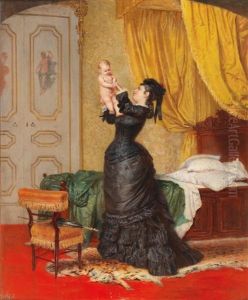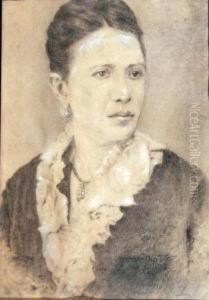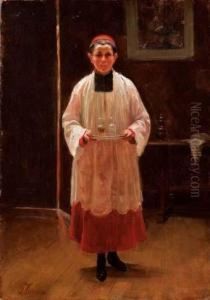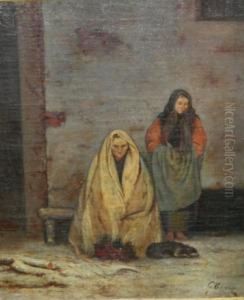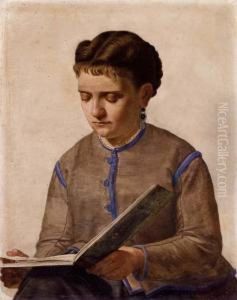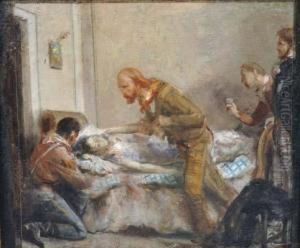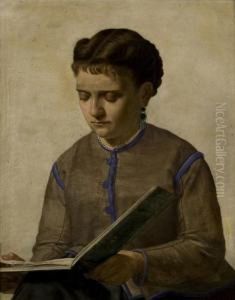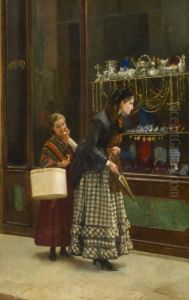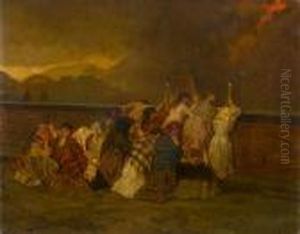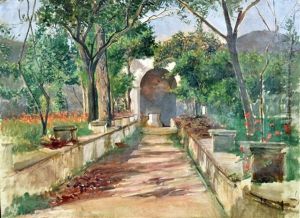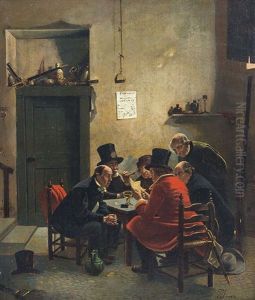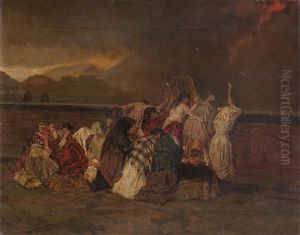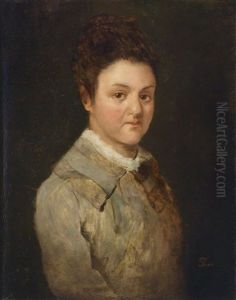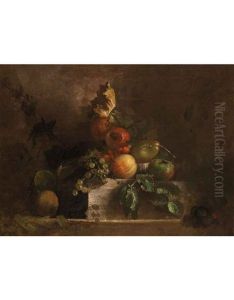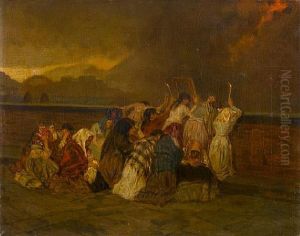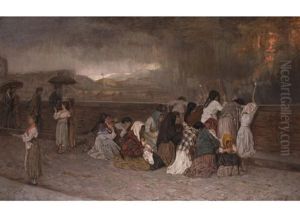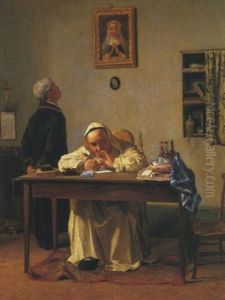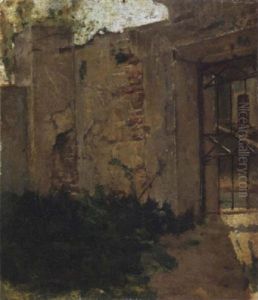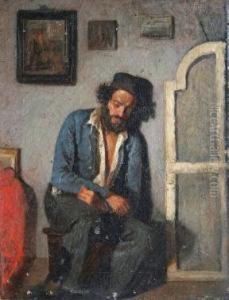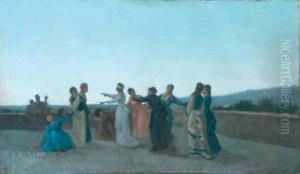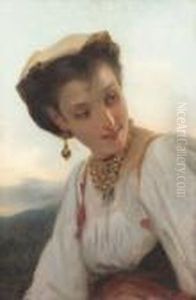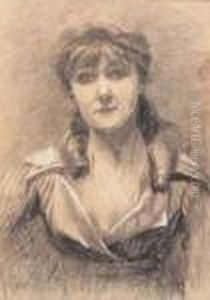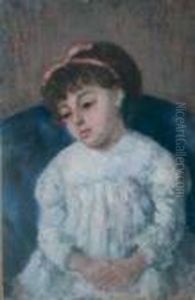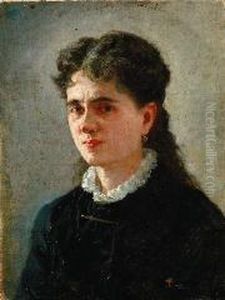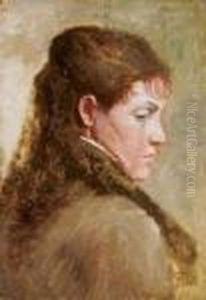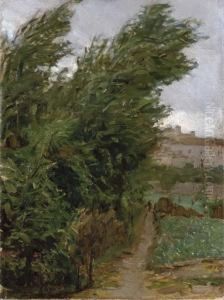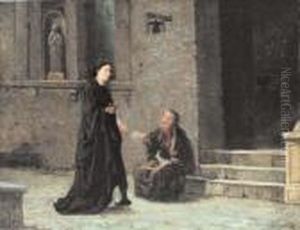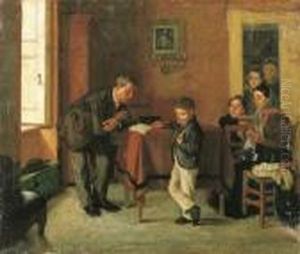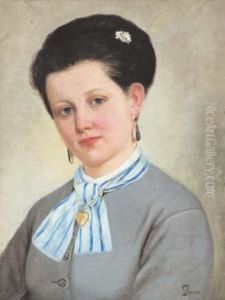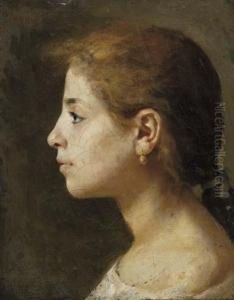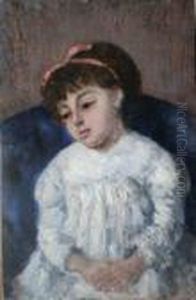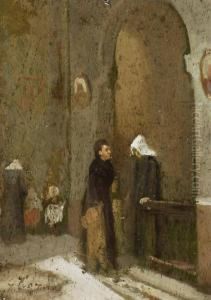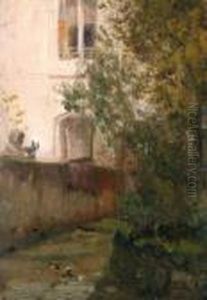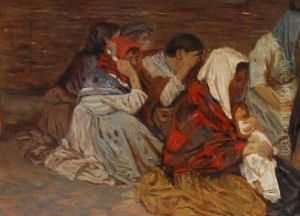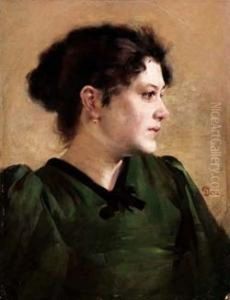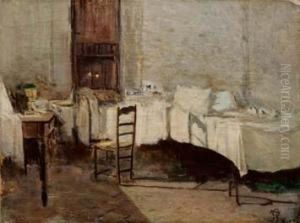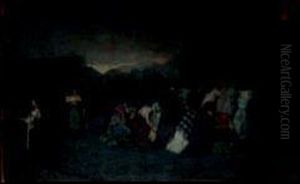Gioacchino Toma Paintings
Gioacchino Toma was an Italian painter, primarily known for his history paintings and portraiture. He was born on September 27, 1836, in Galatone, a small town in the province of Lecce, in the Apulia region of Southeast Italy. Toma showed early promise as an artist and began his studies at the Naples Academy of Fine Arts, where he was influenced by the works of the Neapolitan School and developed a keen interest in depicting historical and religious subjects.
During his time at the Academy, Toma honed his skills in drawing and painting, and his works started to gain recognition for their emotional depth and historical accuracy. He was particularly admired for his ability to capture the nuances of human expression and the atmospheric effects in his paintings.
After completing his education, Toma embarked on a career as a professional artist. He received commissions for various churches and public buildings, and his paintings were exhibited in important Italian art shows, including those in Naples and Turin. Toma's reputation grew, and he became known for his meticulous attention to detail and his commitment to realism in his historical scenes.
Among Toma's most famous works are his portrayals of episodes from Italian history, which were characterized by their dramatic intensity and rich, vivid colors. He was also a gifted portraitist, capturing the personalities and social standings of his subjects with precision and sensitivity.
Toma's life, however, was not without challenges. Personal tragedies and the socio-political upheavals of his time influenced his work, infusing it with a sense of melancholy and sometimes despair. Despite these hardships, Toma continued to paint until the end of his life, leaving behind a body of work that is still appreciated for its contribution to the Italian art of the 19th century.
Gioacchino Toma passed away on February 14, 1891, in Naples. His legacy is preserved in his paintings, many of which can be found in museums and private collections throughout Italy and beyond. Toma remains a significant figure in the history of Italian art, and his works continue to be studied and admired for their emotional power and technical skill.
